 By Cameron Lee
By Cameron Lee
May 28, 2024
When North Carolina filmmaker Jason Arthurs and journalist Liz McLaughlin, first came up with the idea to produce a documentary about The Milestone in 2019, they had no idea how it would end. Arthurs and McLaughlin presumed that, like many aging small music venues across the country in a rapidly developing city, The Milestone could be razed in favor of overpriced housing.
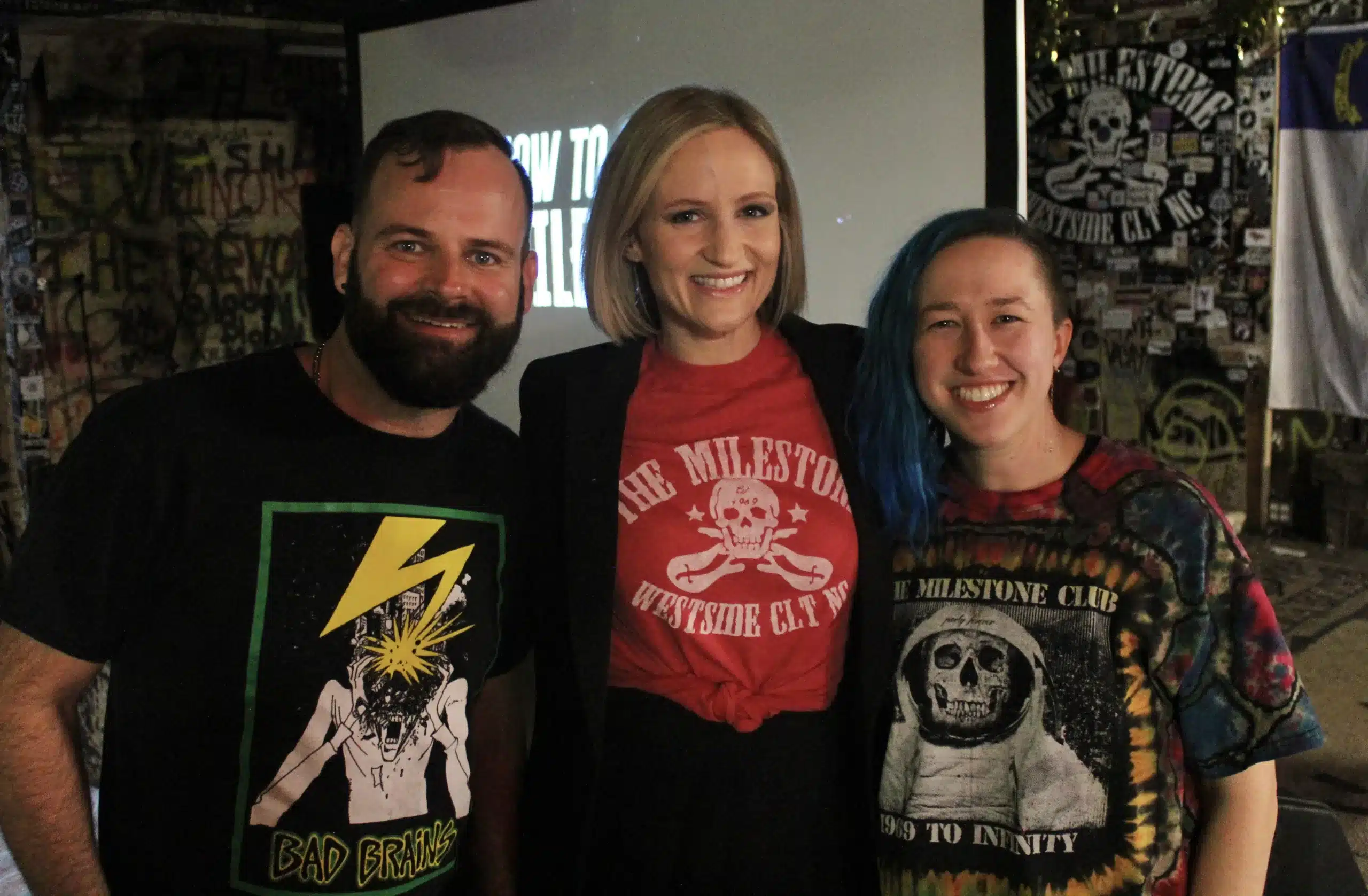
“We saw there was a for sale sign out front. So we kind of went at it with the approach of, ‘Let’s try to document what could be the last days of The Milestone…film the shows, talk to fans, and talk to the bands,’” said Arthurs.
Like many live music enthusiasts in the city, Arthurs and McLaughlin didn’t want to see the hallowed venue shutter. Arthurs performed at The Milestone with his high school band, Nashua, back in the late ‘90s, and McLaughlin, a former Charlotte Roller Girl, cites the Beach Formals and wrestling events with Gore Gore Luchadores, as some of her fondest memories.
“Independent venues are so hard to come by. It’s a world run by Live Nation now. And there’s just such a special experience and community when you go to The Milestone,” McLaughlin said.
Luckily, for the multiple generations of patrons who have walked through the doors of The Milestone since 1969, they won’t be losing that community anytime soon. In 2020, just before the start of the Covid shutdown, Ross Pierson, the founder of telecommunications company Pierson Wireless, purchased the building, protecting the storied venue from outside forces (and bulldozers) for the foreseeable future.
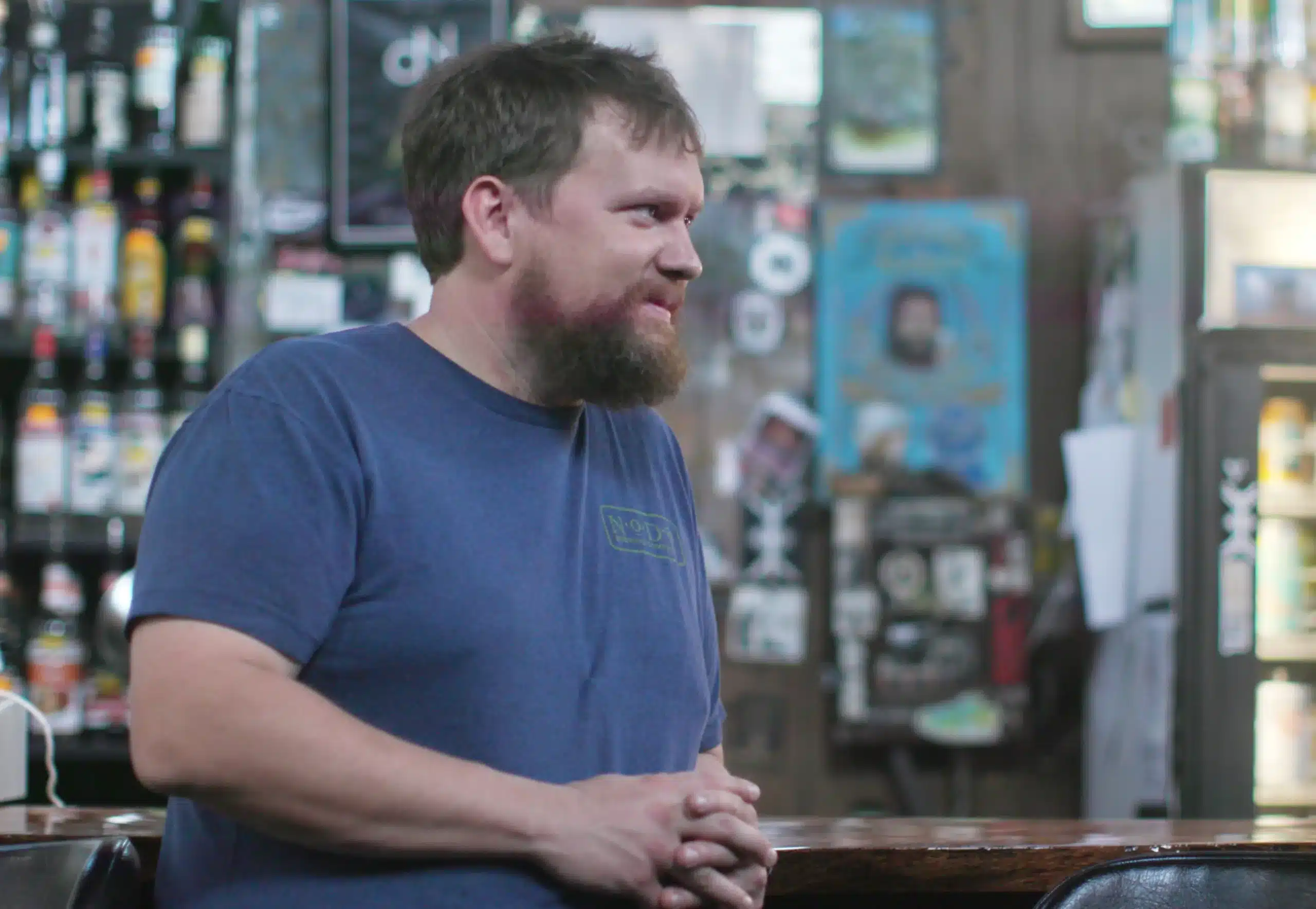
“There was a big question mark. And then the world shut down shortly thereafter, ‘What’s gonna happen to not only The Milestone but independent venues as a whole across the country?’” said McLaughlin. “That’s sort of the moment that we thought, you know, I don’t think this is going to be just a short film.”
The four years that Arthurs and McLaughlin spent piecing together the feature-length documentary, How to Save a Milestone, were eventful to say the least.
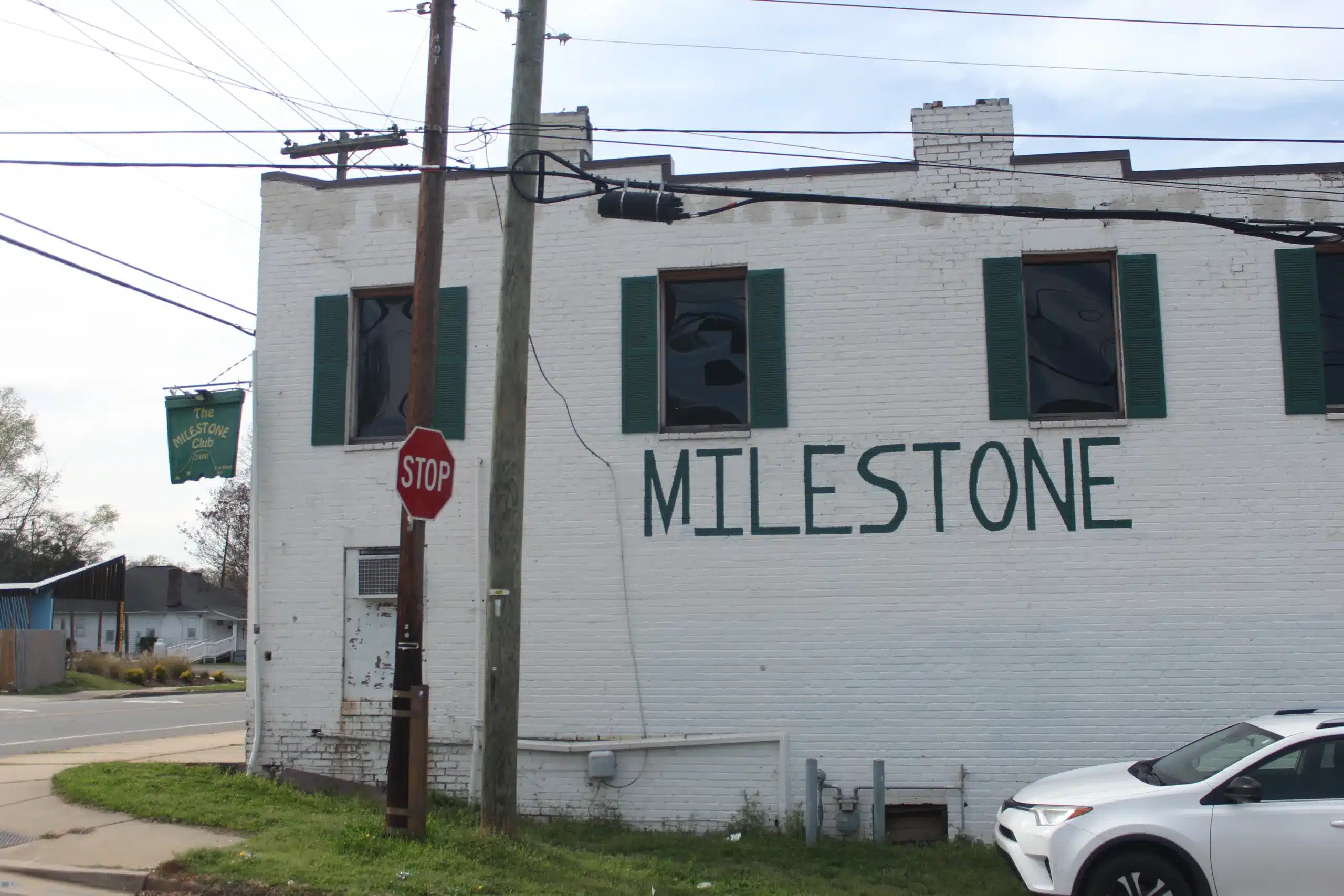
The History of The Milestone
The building The Milestone occupies was built in the early 1900s by the family of Jamie Hoover, who happened to be in the Charlotte jangle pop band, The Spongetones. The white brick structure connected to a small house, was once a grocery store (Hoover’s Grocery) and then a hardware store (Hoover Brothers Hardware). The family sold the building in 1962 and it was purchased by Bill Flowers in 1969, who eventually turned it into a music venue.

Over the five decades The Milestone has been in existence, it’s been helmed by a rotating cast of Charlotte music stalwarts who kept the venue, affectionately nicknamed “The Ghetto Fortress,” lively, despite a few dormant stretches. After its original owner Flowers, Jeff Lowery and Tim Blong took it over in the mid-to-late ‘80s (they went on to open Pterodactyl Club and 13-13), then Penny Craver in the early ‘90s, who also opened Tremont Music Hall in 1995. A young Neal Harper and music booker Phillip Shive ran the operations starting in 2004, passing the torch to Jonathan and Stephanie Hughes in 2010. In 2018, longtime booking manager, Wyley “Buck” Boswell, took over as the new owner and has guided the west Charlotte haunt through a pandemic and, now, a new landlord.
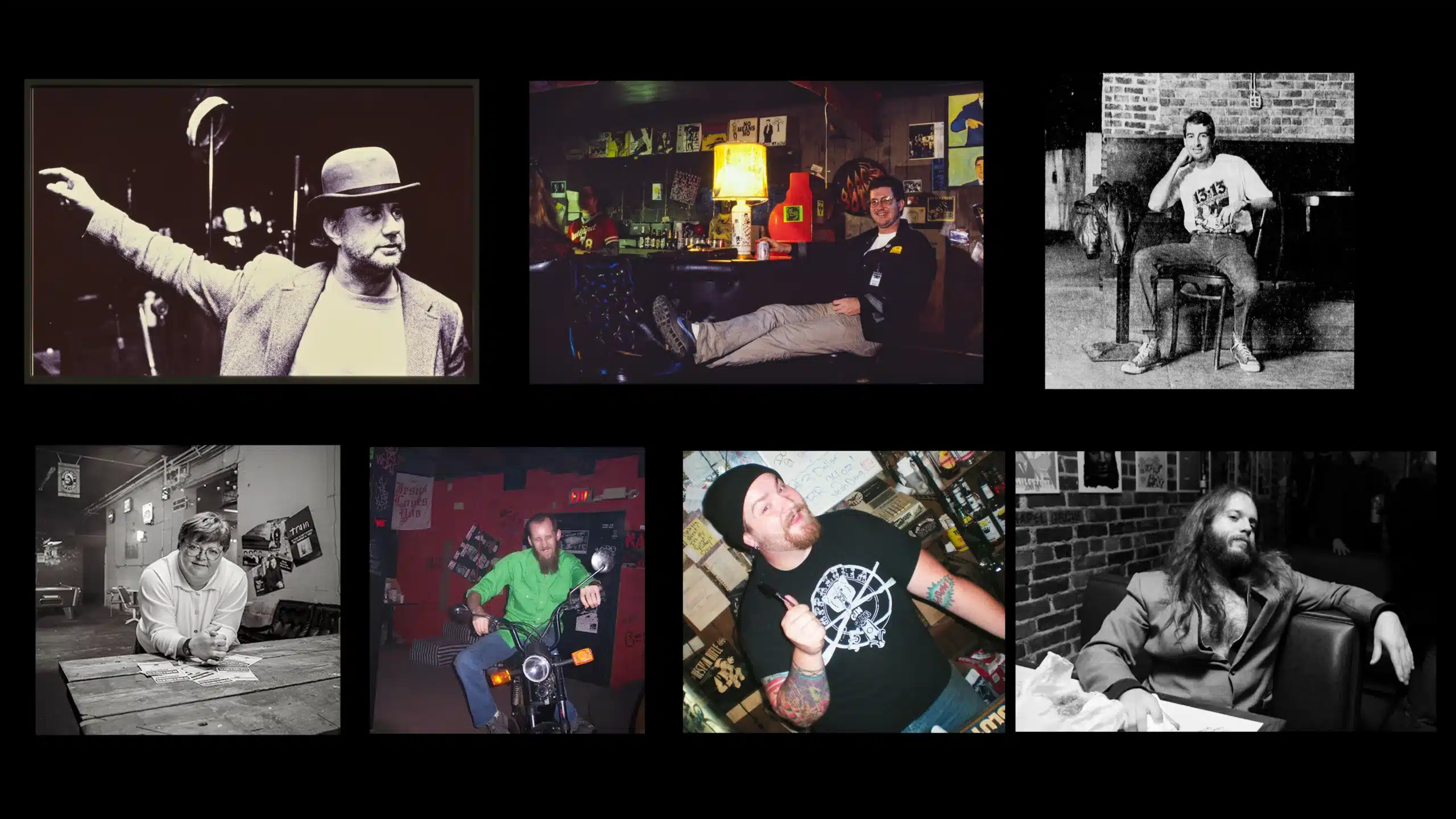
The historic venue has outlasted iconic rock clubs like Manhattan’s famed CBGB (1973-2006) and even Charlotte’s beloved Double Door Inn (1971-2017), seeing a slew of esteemed rock icons walk through its doors. Kurt Cobain (Nirvana), Michael Stipe (R.E.M.), Henry Rollins (Black Flag), and even blues legend, Bo Diddley, have all graced The Milestone’s cramped stage, along with the Violent Femmes (who are featured in the documentary), the Go-Go’s, The Flaming Lips, Fugazi, Sunny Day Real Estate, and countless others. In 2010, the Viceland television series, Noisey, even documented a budding synth-pop band out of East Carolina University in Greenville, Future Islands, performing at the venue. More importantly, the venue has provided a haven for countless indie bands and acts of all genres throughout the region to showcase their talents. As Neal Harper states in the documentary, “People pigeon hole it as like a rock club or a punk rock club, but anybody that’s paid attention can obviously see it is a community expression space.”
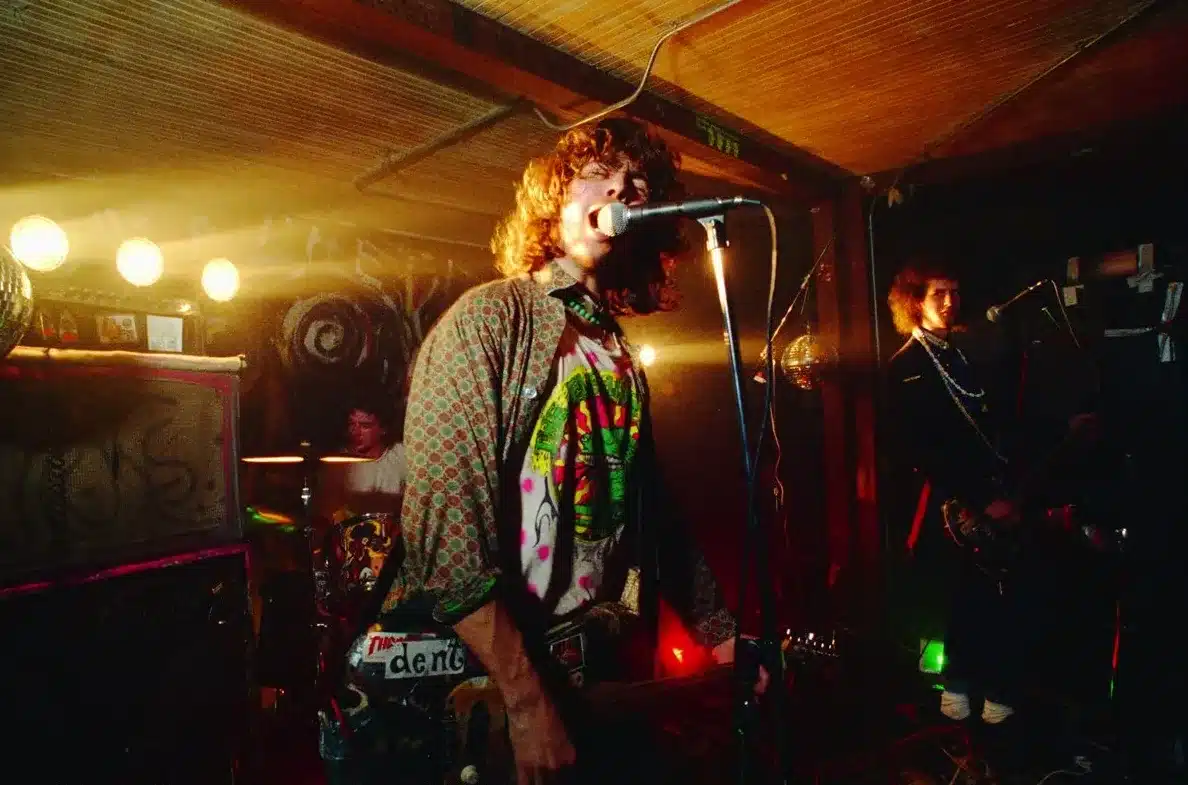
Documenting History and Folklore
As you might imagine, sorting through the many stories, articles, photos, and audio from a venue that has been in operation for over 50 years, was a daunting task. Arthurs and McLaughlin, fortunately gained access to multiple archives, including that of Jeff Clayton (frontman of Charlotte punk rock band, Antiseen). Clayton, whose music career essentially got started at The Milestone after meeting Henry Rollins, received encouragement from Rollins after giving him his band’s demo. He is one of the many integral characters featured in the documentary who is vital to the story of The Milestone.
“He [Clayton] collected every flier, every seven-inch, you know, every kind of snapshot. He photographed things himself. Those photos of Black Flag, he took. So luckily, it kind of fit in nicely that his story went in parallel with The Milestone story,” said Arthurs.
McLaughlin and Arthurs were also able to access the archive of Chris Radok, the Creative Loafing music photographer, who was tragically murdered in 2011 at his home in Charlotte in a burglary attempt gone wrong.
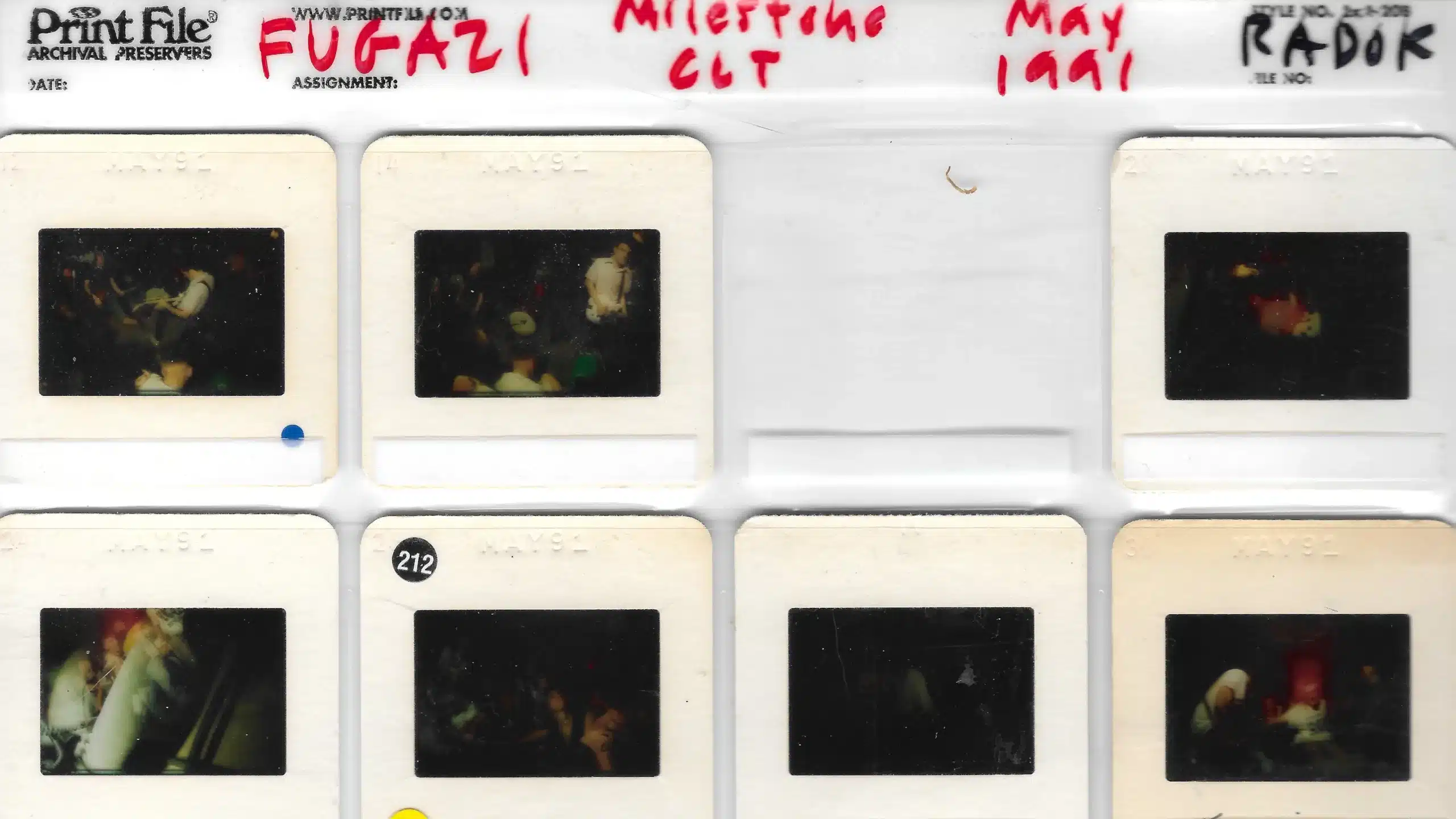
“That was really tough for her [Radok’s friend] to share, having gone through this loss…going through his work, but we’re really grateful that he is part of the film and that his legacy will live on,” said McLaughlin.
Another piece of the puzzle was the work of photographer Kent Thompson, who documented North Carolina’s indie rock scene in the ‘80s and ‘90s, donating his collection to the Wilson Library at the University of North Carolina at Chapel Hill.

“Sometimes your work can just be a critical piece of tissue that connects something,” said Arthurs. “We have that dope montage of his [Radok’s] NOFX photos in the trailer, and it kind of just says what it needs to say about the venue, like in a series of five photos, you really get a picture of what it was like to be there during that era.”
The Filmmakers and Premiere
For Arthurs, How to Save a Milestone, will be his fourth feature-length documentary, and the first produced by his wife, McLaughlin. His most recent project, Hog Farmer, detailed the story of Joey Carter, whose family farm in Duplin County, North Carolina was at the center of a federal lawsuit that eventually led to the loss of his business. Arthurs also interned at famed indie rock label, Sub Pop, and worked with The News & Observer for three years, documenting bands in the triangle area for a project called The Great 8.

Arthurs and McLaughlin, both journalism majors that graduated from UNC Chapel Hill, self-funded the film, and are now looking to share the story of the beloved venue with the world.
“We really want The Milestone to be something that people talk about, like CBGB, all over the country. And we hope that people can even use it as a call to action for their own local independent venues,” said McLaughlin.
They want to screen the documentary at as many independent music venues as possible, and will premiere the film in Charlotte on August 30 at the Independent Picture House with the end goal to land it permanently on a streaming platform. The countless hours of interviews, researching, filming, and editing has thus far been mostly a labor of their love of live music, and they plan to reinvest any proceeds from the movie back into The Milestone and future screenings. McLaughlin wants to see the venue become a destination landmark for music lovers traveling to Charlotte. For Arthurs, he’s grateful for the opportunity to shoot that first big rock documentary he’s always dreamed of.
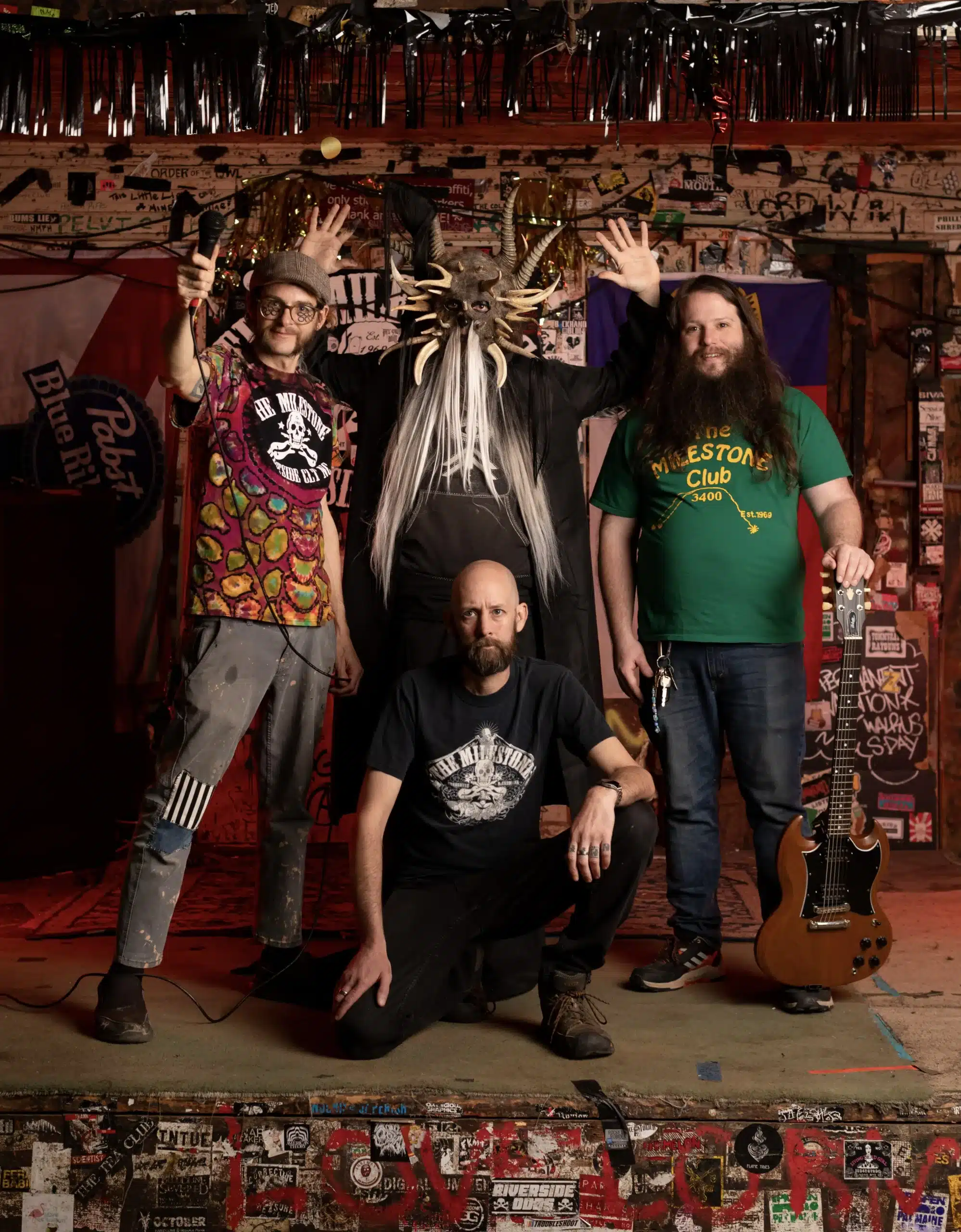
“If someone called me right now and said, ‘This band is playing The Milestone, we want you to go film there,’ I would do it. I’m not tired of going to The Milestone. I can’t say that about every project I’ve worked on. It’s a good story and I think people are going to relate to it for a long time.”
Watch the trailer for How to Save a Milestone below, and follow their social channels (Instagram and Facebook). Purchase tickets to the limited-capacity world premiere on Friday, August 30 at 7:00 p.m. at Independent Picture House (sold out) and the Encore Screening at The Milestone on Saturday, August 31 at 6:30 p.m. (sold out) and 4:00 p.m.
View this post on Instagram
Read next:




